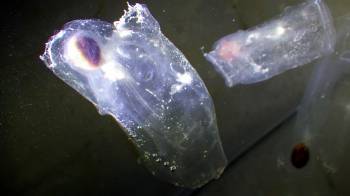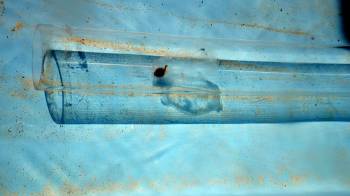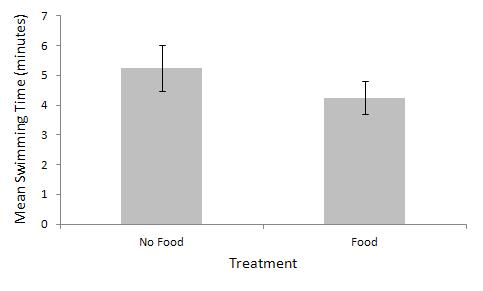Summary
Physical Description
Ecology
Life History & Behaviour
Feeding
Reproduction
Anatomy & Physiology
Sensory Systems (Focus Project)
Evolution & Systematics
Biogeographic Distribution
Conservation & Threats
References & Links | Sensory Systems in Salps (Focus Project)
Aims
To discover if Pegea confoederata is attracted to light.
To discover is Pegea confoederata is attracted to food particles.
Methods
Salps of the species Pegea confoederata were collected on snorkel during the rising tide off the southern side of Heron Island, Qld. The salps were moved to a temporary tank, and then later relocated to a temperature regulated, aerated tank in an indoor setting.

|
|
|
Pegea confoederata salps being exposed to a bright light.
(photo by Helen Twaddle, Heron Island)
|
Phototaxis
In the evening, all lights were turned off around the tank. A bright light was then shone into the tank from one side for 10 minutes. Salps’ reaction to the light was noted. This was repeated several times.
Food Stimuli
A large saltwater bath was set up with approximately 30 cm of water in it. Water flowed in and out the entire time. A 1m long clear plastic pipe was placed into the bath. Salps were randomly selected and placed into one end of the pipe and the time it took for the salp to reach the other end was recorded. Salp sizes averaged at 5cm ± 1 cm.

|
|
|
Pegea confoederata salp in clear plastic tube to be timed.
(photo by Helen Twaddle, Heron Island)
|
As a control, 20 replicates were completed this way. A treatment was then set up (20 replicates) where 0.5 mL of micro-plankton mix was squirted into the tube at the other end as a stimulus (mixture was compiled of 4 types of instant algae – 1 part Nanno 3600, 1 part Isochrysis 1800, 1 part Thalasslosira weissflogii 120 and 1 part pavlova 1800). This mixture was squirted in immediately after the salps were placed at the start of the tube. Salps were raced as normal and timed.
Data Analysis
To compare salp race times without algae stimuli and race times with algae stimuli, a student’s T-test was used in the analysis package R studio (RStudio 2012).
Results
Phototaxis

|
|
|
Graph shows the mean swimming time for Pegea confoederata salps with no food stimulus and food stimulus on Heron Island, QLD. Error bars represent the standard error.
|
Shining a bright light into the tank did not change the behaviour of Pegea confoederata in any way. The salps were not attracted to the light, nor did they avoid it.
Food Stimuli
On average, salps with no food stimulus swam through the tube in 5 minutes and 15 seconds and salps with a food stimulus swam through the tube in 4 minutes and 15 seconds. Salps took on average 1 minute less time to swim with the food stimulus than without it, however this result is not statistically significant (t38= -1.0674, p=0.2925).

|
|
|
Pegea confoederata salp in clear plastic tube to be timed. Green phytoplankton can be seen on the left-hand side
(photo by Helen Twaddle, Heron Island)
|
Discussion
Salps exposed to a light stimulus showed no sign of attraction to the light, or light avoidance. This result is consistent with a species that does not react to light. Pegea confoederata probably does not have a photoreceptic sensory system based on this result. Research suggests that a member of the same genus as Pegea confoederata; Pegea socia; has some form of an eye (Madin and Harbison 1978). Other studies have shown that other salps in a different genus also have eyes (C.Lacalli 1998). However, the research of the current study has no evidence show that Pegea confoederata has similar structures. More research should be conducted to confirm this anatomically.
|
|
|
|
Pegea confoederata salp in clear plastic tube to be timed. Green faecal matter shows the water being moved through the salp.
(video by Helen Twaddle, Heron Island)
|
Salps with a phytoplankton stimuli at the opposite end of the pipe swam one minute faster on average than salps with no food stimuli. However, high variation within each treatment meant that this result was not significantly significant. Alldredge and Madin (1982) found that salps do not generally develop sensory adaptations for finding food or avoiding prey. The authors suggest that this is due to their highly efficient filtering system, allowing them to filter larger amounts of food than most plankton, so developing a sensory system is unnecessary. They also suggest that transparency saves gelatinous plankton such as salps from needing to rely on senses to avoid predation (Alldredge and Madin 1982). |
|